People are talking about you behind your back.
And that’s not necessarily a bad thing.
In fact, it’s actually a good sign. Your brand is getting attention and starting to take off.
Whether we’re talking about your personal brand or your business’s brand, you’ll reach a point where people start talking about you.
It can be kind of surreal. I remember when my personal brand started getting popular. At first, it feels really weird to see people talking about you, not with you.
It’s something that not everybody experiences. Chances are, it’s new to you.
And if it’s your personal brand we’re talking about here, it can even feel a little scary at first.
While it’s true that popular brands get their fair share of haters — I have my haters, too — even some kinds of negative feedback can be a great opportunity to find ways to improve.
You’ve probably noticed that a lot of companies will reply to you if you @mention them on Twitter.
There’s a reason for that. If it’s a customer complaint, responding back to help resolve it is great PR.
Good customer service matters to people. And social media platforms like Twitter let you provide that service one-on-one with an individual customer.
Of course, Twitter’s not the only place people might be talking about you.
Journalists and bloggers might be mentioning you. People might be talking about you on Reddit.
And this post is about how to find out who’s talking about you and what they’re saying.
This is called “social listening.” It’s a powerful way to gain new and useful insights into your target audience.
I’ll also tell you how to start interacting with these people. This is a prime place to really engage your audience one-on-one, in a way that feels authentic and helps cultivate trust in your brand.
It can also be a great opportunity to pick up some juicy backlinks and boost your SEO.
So let’s start with the basics: how do you find out who’s talking about you in the first place?
How to Find Out Who’s Talking About You Online
Before you can start engaging with customers and publications that mention your brand, you need to figure out who’s talking about you and what they’re saying.
This can include mentions of your brand in online magazine articles. Think Entrepreneur, Forbes, that kind of thing.
It can mean bloggers in your niche are talking about you.
It could even mean that your name came up in a comment thread on Reddit.
Social media isn’t the only place where you can start engaging in social listening.
Which means you can’t rely on social media notifications alone.
But there are plenty of ways to find this information. They’re just not always obvious.
Google Alerts
Set up a Google Alert to monitor mentions of your brand.
It’s super easy. Plus, it’s a great tool for finding out who’s writing about you.
Once you set up which keywords to monitor, Google Alerts delivers updates to you directly whenever you’re mentioned.
IFTTT
You can use IFTTT to monitor industry websites.
It’s another handy way to find out who’s talking about you.
IFTTT can do something pretty cool: it can scan an RSS feed of industry websites, and then send you a daily email alert that lets you know if your brand was mentioned.
Hootsuite
Google Alerts and IFTTT are excellent tools for finding out if someone mentions you or your brand in an article or a blog post.
But then, there’s social media.
Platforms like Twitter and Instagram move fast. So you’ve got to act fast, too.
That’s why one of my favorite tools for keeping an eye on social media mentions is Hootsuite.
You can use it to monitor social media mentions in real time, meaning you can respond fast.
Mention
Another tool I really like is called Mention.
Mention is a specialized tool for monitoring brand mentions online. Clever name, right?
When you sign up and create your account, you can specify what kind of sources you want to monitor.
You’ll find out whenever someone mentions you or your business. And your mentions are updated in real time.
Open Site Explorer
Then, there is Moz’s Open Site Explorer.
This is another way to check out what people are saying about your brand. It lets you take a look at who’s linking to you.
Just enter your URL, and you’ll be able to see the inbound links.
Once you’ve got that information, you need to make the most of it. It’s time to start engaging the people who are talking about you.
How to get these people engaged
How can you leverage these brand mentions?
It can done, but there are some factors to take into consideration.
Who’s talking about you, and in what context?
Let’s start with some basic questions about the person or publication that mentioned you.
- Who are they?
- How do they know about you, your product, or your services?
- What do they want or need from your brand?
There are different kinds of people who might be talking about you. And you can respond to each type of person in different ways to make the strongest connection possible.
Here are six ways to engage someone who’s talking about you.
1. If a journalist mentions you in an article, or on social media, try promoting him or her in turn.
If someone talks about you, you can engage this person by talking about him or her.
Picture a journalist in this case. Maybe he or she mentioned you in a recent article.
Our goal here is to make sure you’re on his or her radar, so to speak, for more coverage in the future.
Check out the person’s Twitter page. You’ll find a bunch of links to his or her recent articles.
If you find something relevant to your niche, share it with your audience. It’s a good idea to mention this person’s handle in the tweet, too, so he or she will be notified directly.
This shows the journalist that you know about him or her, and that you’re interested in his or her work. It’s a low-key but effective way to up your chances of getting mentioned again in the future.
2. When someone is a big fan of your brand, take the time to thank him or her.
You can do this publicly or privately, depending on the situation.
You can usually reach these people effectively via Twitter, whether it’s an @mention or a direct message.
Let them know that you feel honored to have been mentioned by them. If you can send that message, you’ll stroke their ego a little bit.
Be sincere. You want to come across as genuine and authentic.
The last thing you want is for them to think you’re only talking to them because you want something. You need to come across as genuinely interested in what they have to say.
Twitter’s a perfect place for this kind of thing.
Here’s a great example from Mention.
Taking that little bit of time to thank your fans can pay off in a really big way.
One of the most powerful things about social media is that brands and influencers can connect with fans and consumers one-on-one.
So how do you find your biggest fans?
Look for people who share a lot of your content, or who said something really positive about you. If you host a Twitter chat or a webinar, they’re the people who jump at the chance to participate.
I do want to mention that you shouldn’t thank them publicly on Twitter every single time they mention you. That looks a little weird and it takes up too much of your time.
3. When people mention you in a positive way, give them something nice to show that you appreciate their endorsement.
This doesn’t have to be anything huge or expensive. You could email or DM them a discount coupon code, or offer to send them some free merch on the house.
You can also get creative with this.
Buffer sends out customized swag to some of their biggest advocates.
Things like custom Moleskine notebooks.
Another fan received a handwritten note, plus some gummy bears.
This might seem a little involved, but here’s the thing: when you do something like this, the person almost always shares it on social media.
So it’s great publicity. You get to make somebody’s day and look good doing it. That’s a win-win.
4. When another business in your industry mentions you or shares your content, try sharing some of their content in return.
Maybe it’s a company who uses your product. Or, maybe they’re just in the same industry.
Either way, they probably curate industry-relevant content on their social media accounts. Chances are, so do you.
So if they’re sharing your content on a pretty regular basis, why not share theirs with your audience?
It’s a great way to strengthen your connections within your industry.
5. If customers are saying positive things about you online, try highlighting them in case studies or success stories.
Let’s say you’re a B2B SaaS company. And one of your clients is an accounting firm.
You notice that they’ve published some pretty glowing praise for your company on social media. Your product is helping them a lot, and they’re seeing fantastic results.
Not only are these kinds of customers the ones you want to ask for testimonials, but you can also highlight them in a case study or success story.
Detailed case studies are one of my favorite kinds of lead magnets. And a “Success Stories” section on your website is a very strong form of social proof that builds trust among potential clients.
HubSpot, for example, has literally hundreds of customer success stories on their site (if not more).
They helpfully break these down into industries and company size so that each customer will see relevant, personalized examples on their site.
6. If a customer is talking about having a problem with your product, or a question about it, reply to him or her directly and help solve it.
This is where Hootsuite and Mention can come in handy, at least for mentions on Twitter.
Twitter moves fast. Like, really fast.
In fact, based on the change in engagement with posts over time, experts have estimated that the average “half-life” of a tweet is just half an hour or so.
Take a look at this graph from Lee Aase, the Director of the Mayo Clinic Social Media Network.
See the curve there? Engagement grows fastest in the first five minutes. Then, it continues to grow, but by the 40-minute mark, it starts to plateau.
Here’s a graph of the tweet’s total impressions for each day, starting with the day it was posted.
That means that the vast majority of the engagement that a specific tweet gets will occur within the first hour after it’s posted.
So when a customer mentions you on Twitter and needs some help, or has a question, you’ll want to jump on that fast.
In most cases, people will @mention you when they need customer service.
Here’s a good example from LEGO.
In some cases, the customer will thank you publicly after you’ve helped him or her out.
Sometimes people get angry at your brand online.
Emotions are a heck of a thing. If someone is frustrated, he or she will feel an emotional response in the form of anger.
Maybe this person shouldn’t get emotionally angry. Maybe it’s an overblown response. But the fact is, this is something companies run into a lot.
If you’ve ever done customer support in a call center, you know exactly what I’m talking about.
People often turn to social media to vent that frustration.
When you’re mentioned in a negative comment on social media, should you respond?
If it’s a customer service issue, then yes, absolutely.
In fact, an empathetic and helpful response can transform a potential blow to your reputation into an opportunity for good PR.
Here are a few tips for addressing customer complaints on Twitter.
Respond as fast as you can.
Remember how the half-life of a tweet is less than an hour?
That first hour is the window in which you need to respond to a complaint. This is part of why setting up brand mention alerts is so helpful.
If you made a mistake, apologize and don’t try too hard to deny it.
Everyone messes up sometimes.
Software products can have bugs or a poor user experience. Physical products can have manufacturing defects or design flaws.
When something goes wrong, always own up to it.
Go ahead and move the conversation out of the public eye after your initial response.
You don’t need to go back and forth via tweets in a way that makes the entire exchange public.
Once you’ve established contact with the customer, go ahead and continue the conversation via DM. You might even want to get his or her email address and go from there.
Make sure your response is personalized.
You want to know for sure that your response is appropriate to the problem the customer is having.
An automated Twitter response might work great in some cases, but there could also be that odd situation where your response is totally inappropriate.
That last one is important. It’s tempting to just automate this kind of thing, especially if you’re running a startup or a small business, and you’re wearing tons of different hats.
But automated Twitter responses can go wrong.
The sheer dissonance between a customer’s comments and your response will make it very obvious that it was an auto response. And you don’t want that.
A quick word about straight-up haters
Some customer complaints are valid. They can help you figure out where to improve your product or service.
But you might also find another kind of negative feedback.
Every influencer or celebrity has their fair share of haters. A quick look at Apple or Microsoft confirms that this can be true for brands, too.
So what do you do when someone talks about you in that way?
This is one of the few situations where my advice is to just ignore it and move on.
I know it’s not a good feeling.
Remember in high school, when you overheard that cluster of preppy kids talking about you behind your back during study hall when they thought you couldn’t hear them?
It’s like that. And it’s not fun.
But the more popular your brand becomes, the more likely you are to have haters as well as fans and followers.
When someone is downright mean, there’s not much you can say to him or her that will be productive.
Sure, you could be witty and throw some shade his or her way.
But the vast majority of the time, it’s just plain not worth it.
If someone’s decided he or she just doesn’t like you — and this is something I’ve been on the receiving end of myself — there’s not much you can do to change his or her mind.
Don’t take it too personally.
Conclusion
There are a ton of different ways you can reach out and connect with people when they mention you or your business online.
The right approach depends on the context. Responding to a customer complaint on Twitter is totally different from reaching out to a journalist who mentioned you in an article.
Taking the time to reach out to people individually pays off big time in the long run.
This is true for company brands. But it’s really, really important if you’re building a personal brand and establishing yourself as an influencer.
People love it when someone they admire takes the time to say hello to them. Ever have a celebrity tweet back at you? It’s a good feeling.
Once you’ve set up ways to alert yourself ASAP when you’re mentioned online, you can jump in and engage your audience in a way that’s unique to the 21st century and social media.
So don’t be afraid to go say hi to your biggest fans!
How do you engage audience members when they mention you in passing online?

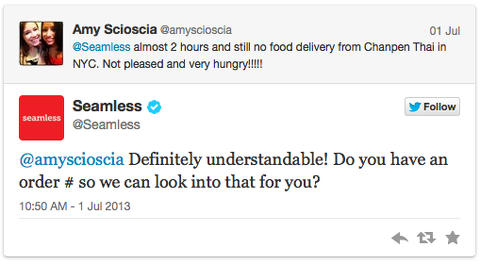
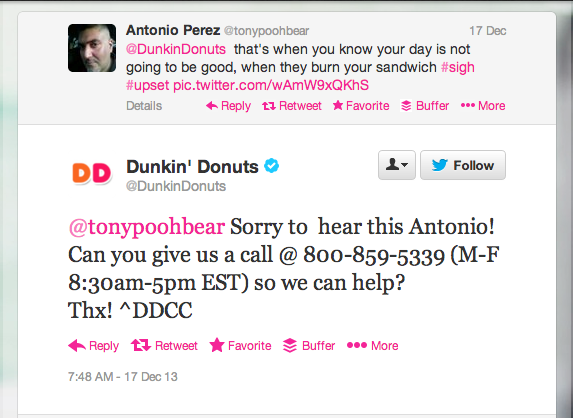



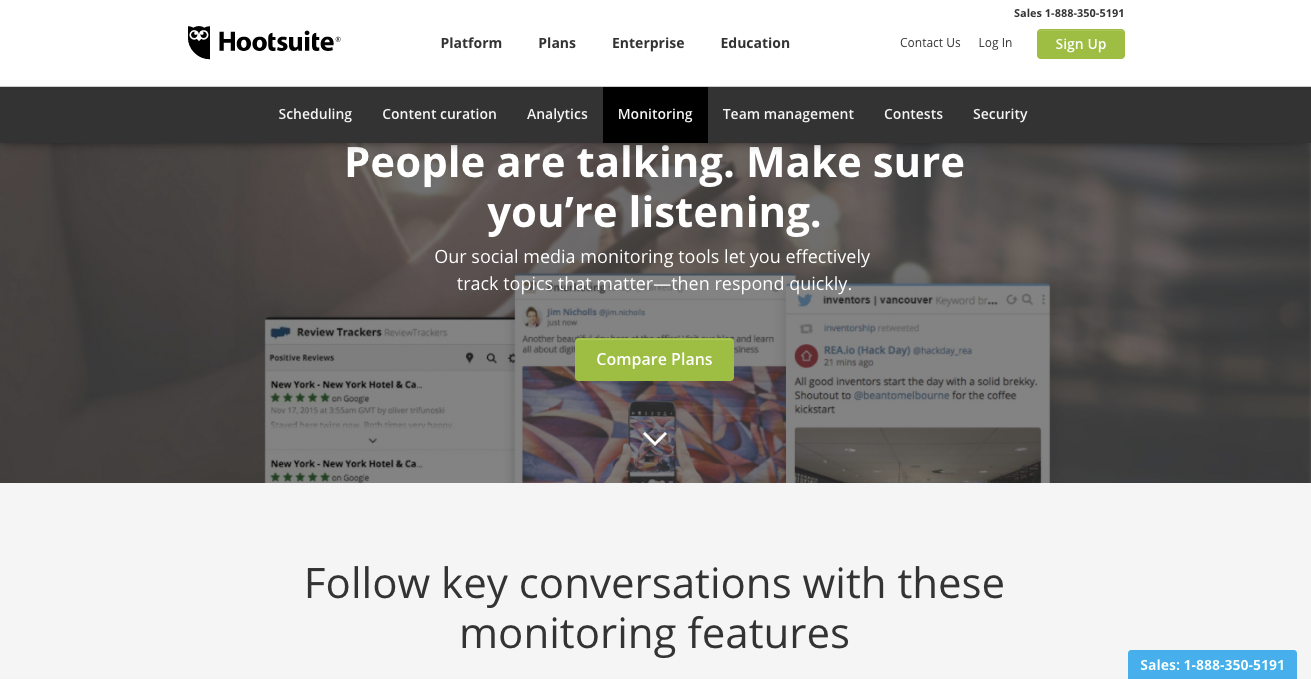


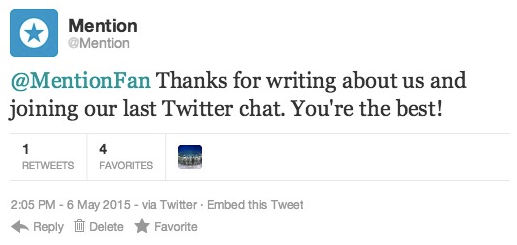
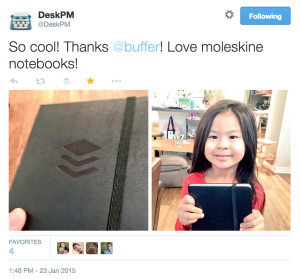
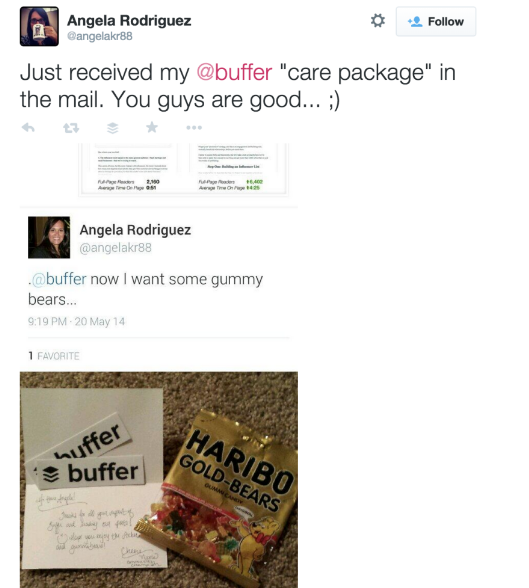

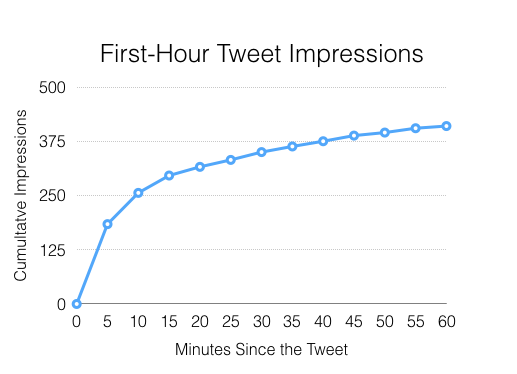
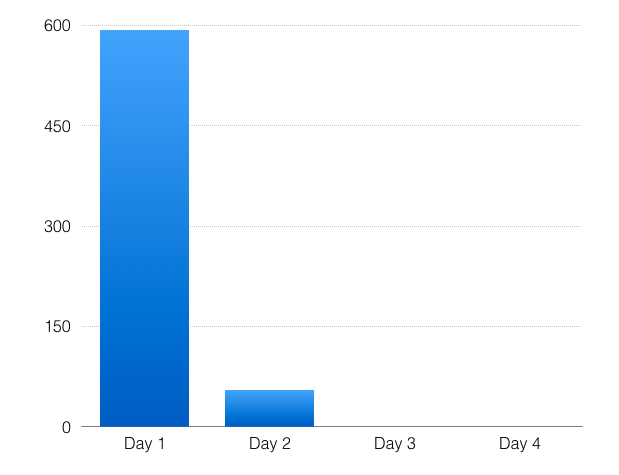
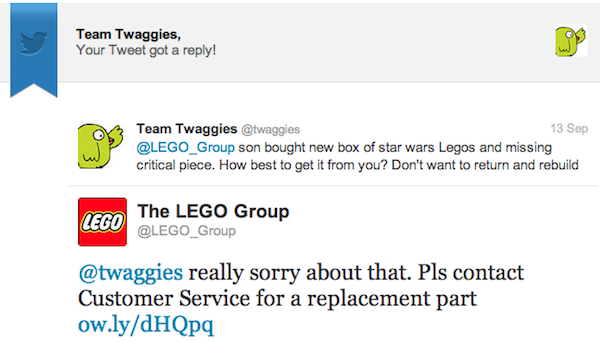
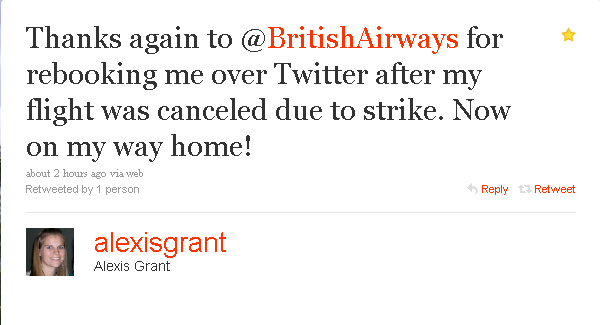
Comments (6)